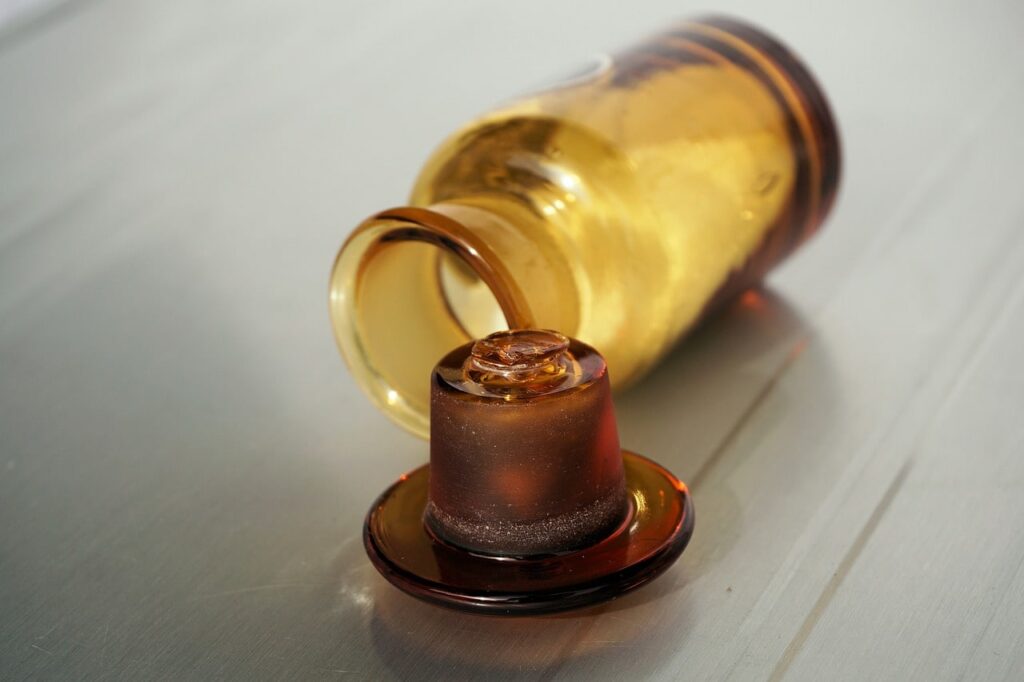Arsenic Poisoning Arsenic is not poisonous because it is not absorbed from the intestines. The poisonous forms of arsenical compounds are as follows:

- Arsenic oxide/trioxide (Sankhya/ most common)
- Copper arsenite (Scheele’s green)
- Copper acetoarsenite (Paris green)
- Arsenic acid
- Sodium or Potassium arsenite
- Arsenic sulphide
- Arsenic trichloride (Butter of arsenic)
- Arsen
- Organic compound (Cacodylate, Atoxyl, arsenic, Salvarsan, Mepharsan, etc.)
Character of Arsenic
- No taste
- No smell
- Sparingly soluble in water
- When added to water, it floats on the surface
- Sublimes on heating
- Smooth, heavy, crystalline white powder
Uses
- Fruit spray
- Sheep-dips
- Weed killer, Insecticide, Rat killer
- Flypaper
- Calico printing
- Taxidermy
- Wallpaper and artificial flowers
- Lath and timber preserving
Absorption Orally (pentavalent) from the stomach, also dermally (arsenite), and inhalation (arsine)
Distribution: All tissues of the body. Mostly in bones and keratin tissue, such as hair, nails, etc. In intermittent chronic poisoning, successive deposition of arsenic is seen in hair and nails. It appears in hair and nails within an hour of ingestion. It does not cross the BBB.
Excretion—Mainly through urine, but can also be through bile, sweat, feces, milk, and other secretions. It appears in urine within half an hour of ingestion.
Tolerance: A chronic user as an aphrodisiac may tolerate up to 0.3g. Such a person is known as an Arsenophagist
MECHANISM OF ARSENIC POISONING
(1) Arsenic > Sulphydyl groups of Pyruvate Kinase and other Phosphatases (in Mitochondria) > Interferes with cellular respiration, i.e., Glycolysis. Damage vascular endothelium > Dilatation of the vessels > Increases vascular permeability > Tissue edema & hemorrhage (especially in the intestinal canal) > Hemorrhagic Diarrhea > Hypovolumic Shock > Death.
(2) Arsenic > Depression of CNS > Coma > Death.
(3) Arsenic > Depression of myocardium > Cardiogenic shock > Death.
FATAL DOSE 0.1 to 0.2 g
FATAL PERIOD – 01 to 02 days
DAILY NORMAL INTAKE– 0.5 to 1 mg
SYMPTOMS AND SIGNS OF ARSENIC POISONING:
Fulminant Type
It occurs due to ingestion of massive doses (0.3 to 0.5 g). The poison is rapidly absorbed from the intestinal tract and causes massive dilatation of all capillaries and small arterioles, especially in the splanchnic areas, causing a sudden marked fall of blood pressure, followed by hypovolemic shock and death. It also depresses the action of heart muscles, which is also a cause of cardiogenic shock.
Gastroenteric Type: This is the common form. Starts half to one hour after ingestion. It may be delayed for some hours if taken with food.
- Burning and colicky pain in the throat and abdomen
- Dysphagia
- Severe projectile continuous vomiting
- Intense thirst
- Severe involuntary purging with tenesmus, pain and irritation around anus
- Stool is firstly dark in color and bloody, later on colorless, odorless, rice-water type
- Acute circulatory failure
- Oliguria, hematuria, dysuria
- Headache, vertigo, tremor
- Hair loss and eruption on the skin.
Narcotic Type-
- Giddiness
- Tenderness of muscles
- Delirium > Convulsion > Coma > Death
- Rarely complete paralysis of the muscles of the extremities
TREATMENT:
- Repeated stomach wash at intervals
- Demulcents prevent absorption
- Antidote: Freshly precipitated hydrated Ferric Oxide
- BAL: 200 to 400 mg on the first day, 100 to 200 mg on the second and third days, and 50 to 100 mg for 7 to 10 days bd. DMSA or DMPS may be used instead of BAL. They are better.
- Inj. Penicillamine- to 500 mg qds.
- Purgatives: Castor oil or Magnesium Sulphate
- Cholera saline I/V to combat shock
- Antibiotics for preventing secondary infection.
- Analgesics and antispasmodics for controlling pain
- Hemodialysis or exchange transfusion may be required
POSTMORTEM FINDINGS OF ARSENIC POISONING:
External:
- Signs of dehydration may be found
- Rough, inelastic skin
- Sunken eyes
- Shrunken or emaciated body
Internal:
- Stomach: Mucosa is swollen, edematous, and red in patches or as a whole, especially at the pyloric area, greater curvature, posterior part, and cardiac end. The mucosa appears as red velvet. Sometimes, a large submucous subperitoneal hemorrhage is seen. Arsenic particles may be seen on the sticky mucus covering the mucosa. Some erosion and ulceration may also be seen.
- Intestines—Small intestines are flaccid and contain large flakes of mucus with very little fecal matter. The cecum and rectum show slight inflammation.
- Liver, kidneys, and spleen are congested, enlarged, and show cloudy swelling, rarely fatty changes. Glomerular nephritis is commonly seen in the kidneys.
- Hemorrhages are seen in the abdominal organs, larynx, trachea, and lungs.
- Lungs are congested, and subpleural ecchymoses.
- Heart: Subendocardial petechial hemorrhages of the ventricles are seen, which is also pathognomonic.
D/D-
- Poisoning by phosphorus, barium, or mercury.
- Heatstroke
- Acute infectious disease, e.g., influenza
- Traumatic asphyxia
Special Features:
v Arsenic in blood and liver is 1 mg%
v. Sometimes arsenic penetrates through the walls of the stomach and appears in the liver and omentum.
v. If putrefaction takes place, arsenic is seen as yellow streaks in the subperitoneal layer of the stomach and intestine. It is due to the conversion of absorbed arsenic into sulfide.
v It is found in bones, hair, nails, and skin after a few years, also
Arsenic is a popular Homicidal poison because
- It is cheap
- Easily available
- Colorless
- Odorless
- Tasteless
- Low lethal dose
- Can be easily administered with food or drink
- The onset of symptoms is gradual
- Symptoms mimicking a natural disease
Disadvantage as Hoa homicidal poison because
- Sometimes symptoms appear quickly
- It delays putrefaction
- Can be detected in a highly decomposed body
- It can be detected in bones, hair, and nails after several years.
CHRONIC ARSENIC POISONING:
Sources:
- Drinking water
- Adulterated food
- Preserved food
- Leather industry workers
- Timber industry workers
- Printing industry workers
- Paint industry workers
- Taxidermists
Pesticide industry workers
SYMPTOMS AND SIGNS OF CHRONIC ARSENIC POISONING
Skin
- Pigmentation (flexures, temple, eyelids, neck)- type
- Hyperkeratosis- (palm, soles, fingernails)
- Aldrich-Mees lines in fingernails
Eyes: Congestion, watering, and photophobia
GIT—Nausea, vomiting, abdominal cramps, diarrhea, and salivation
CVS-CCF, dependent edema
Liver Hepatomegaly, jaundice, and cirrhosis of the liver
Blood—Anemia, thrombocytopenia, bone marrow depression
Kidney—Chronic nephritis, oliguria, hematuria
CNS—Polyneuritis, paraesthesia, numbness, encephalopathy
TERATOGENIC—Can cause Lung and skin cancer and leukemia
TREATMENT:
- Removal of the patient from the source
- BAL or Penicillamine
- High protein diet, fresh vegetables
- Care of hands and feet
- Antibiotic if a secondary infection occurs

PM FINDINGS:
- Emaciated, jaundiced, hyperpigmented, hyperkeratosis
- StomachNormal or signs of chronic gastritis
- Intestines dilated with thickened mucosa
- Liver—Fatty change or necrosis
- Kidney—Signs of tubular necrosis
